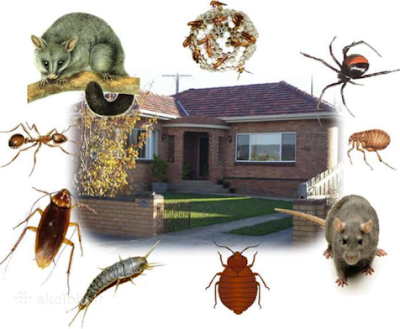No matter where you live, you will find bugs everywhere. They crawl inside your homes through the walls and windows. From the buzzing sounds of the mosquitoes to the whistling sounds of the termites, it's quite irritating. Bees, wasps, and other insects give you painful bites, but there are some harmless pests as well. There are some pests only known to destroy property and homes. So, How to Pest-Proof Your House? This is one answer that all people are looking for.
The best way of prevention is to keep these pests out of your houses completely and all you need is pest control services for this. If they don't find a medium to get inside, they will stay outside only. So, sealing up all the holes and cracks works the best. There are some amazing ways to pest-proof your homes. These ways are also helpful in saving you and your family from these pests.
Ways to pest-proof your homes
Adding of screens to the windows
When you add screens to the windows, the pests get very less chance to enter. Most people open windows during summers for natural ventilation. But the pests can survive in hot and humid climates. They get inside your homes and they can cause havoc. Enjoying the fresh air without these pests disturbing us is a great thing in itself.
So, you can add a mesh or fine screen for keeping the household pests outside. Also, check the screens carefully every day to check if it has got cracks and requires sealing.
Sealing all the doors for cracks
If you see any cracks, you should seal them instantly. You will find many unsealed gaps in the pathways of your homes. This is like an invitation for these creatures. Additionally, put up a sturdy aluminum threshold acting as a termite control service. Putting the threshold with door sweeps acts the best.
Door sweeps are quite budget-friendly and economical and they can be purchased in any of the hardware stores. These provide the effective gap between the bottom of the doors and the threshold. You can use an all-weather door kit for prevention. So, it will prevent the insects from entering both from forward and from the sides.
Sealing of all the utility openings
There might be utility installations done in your homes. How to Pest-Proof Your House? Is this the question that is disturbing you? These installations will require drilling in the homes. The tiny gaps will give access to the bugs and pests to get inside your homes. It will include all the entry points of the pipes and wires.
You can inspect the exterior of your homes to find out about these openings. It can be at the ground level or even at the roof level.
Keep your homes always clean
Some tiny food particles, crumbs, etc. attract so many pests inside your homes. Keeping your home clean is the first step towards preventing these pests. Cockroaches love staying in dark places. They hate the light and they can eat anything to survive. Don’t give the boxes cluttered. Keep the books and magazines away from the dark places.
You can use some anti-pest control measures like the sprays to make your homes pest proof. Store food in air-tight containers so that the pests can’t touch it.
Mending of the holes and cracks
The bugs are so tiny that they can get through all the holes and tiny spaces. So, don’t be surprised if you see these bugs entering from the tiniest of the holes. Seal all the cracks and holes. So, do it from the outer parts of your homes to make it effective.
Maintain the exterior of your homes
You can do pest control if you keep the exterior of your house clean. Also, check all the water collecting areas. Don’t let the moisture disturb the lawns and gardens. Getting rid of standing water and clogged areas helps a lot. The water tanks must be always covered with water.
Clean up all the debris and dried leaves. So, it is important to Trim the bushes at regular intervals.
Conclusion
You can use DIY methods for controlling the pests. You can also take the help of professionals if you want to get rid of these pests. The professionals have the right techniques to keep the pests at bay. So, it will help you in controlling the pests.





0 Comments